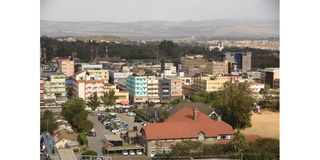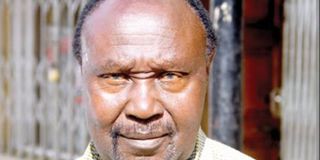How the Asian community influenced development in Nakuru

A view of Nakuru city during the day
The colonial era was mostly marked by segregation and oppression of Africans.
But people often forget about the Asian influence that has shaped Nakuru to be what it is today.
Asian settlement in Nakuru was characterized by the arrival of the railway which was mostly built by the Asians.
As Nakuru District gradually grew, so did the Asian population who by this time had strategically positioned themselves as traders in the district.
The Indians were also segregated but there was a good and bad side to this. The good side was characterized by them being able to have their own Asian schools where their pupils were taught in Punjabi, Urdu and Hindi.
When it came to matters settlement, Asians were put together in an area known as 58 the now Section 58.
During this period, there was some sort of racial hierarchy and the Indians in this instance came in a close second after the whites due to their well rooted involvement in trade and labour.
Some of the well-known statutory Hindu groups in Nakuru include the Lohana, Prajapati and Patel.
Of course, post-independence brought with it a lot of changes.
With the exodus of the white settlers out of Nakuru, the wealthy Asians took up land in the formerly known white settlement areas in Milimani, while others sought to remain in 58.
Businesses along the Donald Avenue, now Kenyatta Avenue, were mostly owned by the Asians.
This to some extent did not sit well with some Africans who had started concocting the notion that Asians were taking over from where the colonists had left off.
These Anti-Asian sentiments were loudly echoed by the late Mark Mwithaga, who was the Member of Parliament for Nakuru, during the Kenyan Olympic Fund launch on January 29, 1972.

The late Mark Mwithaga.
This event was held at the Old Town Hall and many Nakuru residents attended. During his speech he said, “Look at the Olympic team today. A Singh here, a Patel there, even in the East Africa car safari it’s all Singh. I look forward to the day when there will be no more Singhs in the Olympic team, only Africans.”
These Anti- Asian remarks were met by great applause from the crowd who felt like they were being treated like second class citizens in their own home.
Sequentially, this saw the Asian influence slowly decrease.
As civilisation kicked in, the Anti-Asian ideas were slowly quelled over time and soon became a thing of the past.
However, the impact of the Asian community can still be felt in Nakuru, with many owning most of the businesses in Nakuru city centre.
